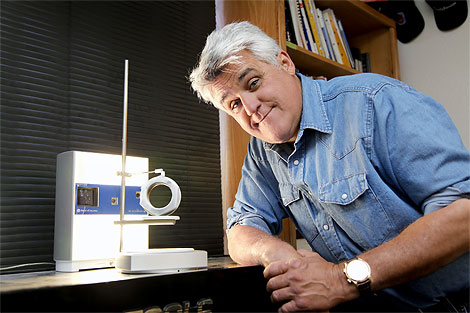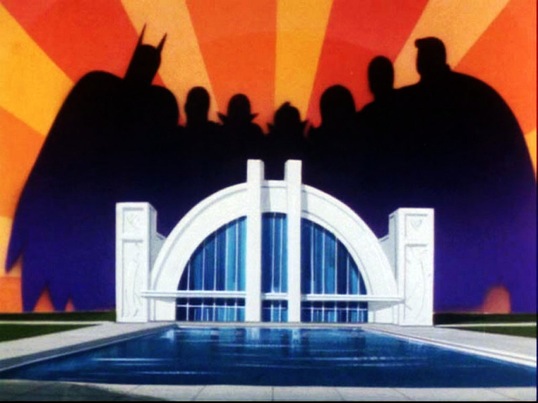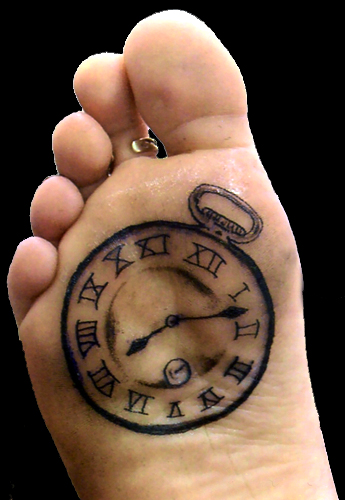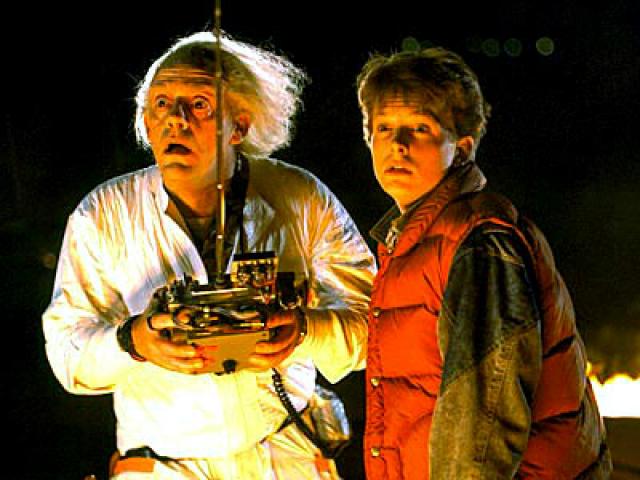Archive for the ‘The Future’ Category
Celestial Work and Gravitational Pull
 Meeting agendas are a good idea. They make clear what will happen and they’re time bound. (At least good ones.) They look forward in time and shape what will happen.
Meeting agendas are a good idea. They make clear what will happen and they’re time bound. (At least good ones.) They look forward in time and shape what will happen.
Meeting agendas are created by the organizer so others follow. It’s strange to think about, but from thin air, the organizer congers magic words on a page that shape direction. The agenda sets the agenda and it’s followed. But in truth, agendas are followed because we choose to follow.
But I want to introduce another schema – the work sets the agenda. In this parallel universe, we don’t choose to follow an agenda; we choose to do work so powerful it sets the agenda – work so dense its gravitational field pulls the organization toward it.
I can hear the moans and groans – we can’t choose the work we do. But you can – if your work is good enough. If your work is brighter than the sun, it’s undeniable and, like the sun, cannot be ignored.
I can hear the next round of moans – we can’t do work that good. But you can – if you think you can and you try. (The only way to guarantee you can’t is not to try.)
And the last round of groans – we’ll get fired if we fail. If you’ll get fired for trying to reinvent your universe, you’re working at the wrong place anyway.
If you like to follow agendas, follow them. But if you don’t, do celestial work, and set them.
Curiosity Fuels Creativity
 Creativity generates things that are novel and useful. Make them successful, and you’ve got innovation. There can be no innovation without creativity.
Creativity generates things that are novel and useful. Make them successful, and you’ve got innovation. There can be no innovation without creativity.
We associate creativity with innate ability that only some have; with transparent happenings that can’t be codified; with eureka moments that come from the subconscious. If anything defies process, it’s creativity. So let’s not use process to squelch creativity, let’s foster behaviors that spawn creativity.
Curiosity is the kindling for creativity; fan its flames and creativity ignites. There a two parts to curiosity – to see things as they are and to propose what could be.
To see things as they are is to create awareness of what is – awareness of context, or changes in context, awareness of worn paths and anomalies, and awareness at high and low levels of abstraction. It takes a disciplined, uncluttered mind to become aware of a new reality, especially while sitting in the old one. And because uncluttering comes only from slack time, to see things as they are is doubly difficult.
The next part of curiosity is to challenge what is in order to propose what could be. To start, root cause must be understood for the new what is. This requires active rejection of old fundamentals and a deep dive to understand new ones. This is toughest when the old fundamentals have been (and are still) successful. (And it’s doubly tough because it requires slack time.) Curiosity twists, pounds, and bends the new fundamentals into a future reality which culminates with a proposal of what could be. Done right, curiosity’s proposal is borderline heretical.
The good news is we don’t need new people – we have plenty of creative capacity. But here’s the bad news – our process thinking isn’t going to get us there because it’s all about behaviors. It’s time to think about how to change things so we can spend more time on behaviors that generate creativity. But if you must use process thinking, come up with a process that lets us spend more time on creative behaviors
The thinking (and some of the language) for this post came from Diego Uribe, a true thought leader in creativity. Thank you Diego.
The People Business
 Regardless of industry, product, or country, we’re in the people business.
Regardless of industry, product, or country, we’re in the people business.
Got a problem? Problems are solved by people, and our first word is usually – who. Who has fixed something like this before? Who can make the problem go away? Who has the chops to pull it off? Our first thought is about people.
Want something done? Work doesn’t do itself, people do work. Whether we want a wrench turned or a project run, our first thought is about people.
Need help? People help people. First thought – people.
Our businesses run on people. Factory workers are people, suppliers are people, leaders are people, and so are most managers. Day-to-day we are neighborhoods that make stuff and families that provide services. (Some of us spend more time with our coworkers than our families.)
But lately, in the name of productivity, there’s an unnatural shift from people-thinking to machine-thinking.
Productivity is good, and we all need it. To get it, we standardize our work; we define step-wise business processes to mechanize; we create scripted approaches to drive out variability. All perfectly good machine-thinking, but we must be careful not to tip into a Frederick Taylor frenzy.
People are best at some things, and machines at others – we all know this. But we’ve got to keep it in front of us. Mechanize things that machines do best, and free up people to do more people-work – that’s the ticket. But we spend far more corporate bandwidth mechanizing work than people-izing.
People-work is governed by choice, feelings, relationships, and creativity. Even the best six sigma squad can’t mechanize that, nor should they try. But what if we invested in improving our people-work like we’ve invested in improving our machine-work? What if we allocated time for our people to improve their ability to decide? What if we had a sea of highly trained creativity experts (people) to help our people create? What if we taught our people how to foster deep personal relationships? Productivity squared.
We’ve got to remember that we’re in the people business and we always will be – relationships, choice, decisions, and feelings cannot be taken out of our work. And we’ve got to learn how to improve our people-work.
Improving people-work is different than improving machine-work (that’s for a different post), but the first tool in the toolbox is trust.
Make It Where You Sell It
 Lean has rolled through our factories and generated profits at every turn. Now it’s time to get serious about savings and realize the next level of savings. Companies are pushing lean into the back office, but that won’t get it done. The savings will be good, but not great. After picking low-hanging factory fruit, there’s uncertainty around what’s next for lean.
Lean has rolled through our factories and generated profits at every turn. Now it’s time to get serious about savings and realize the next level of savings. Companies are pushing lean into the back office, but that won’t get it done. The savings will be good, but not great. After picking low-hanging factory fruit, there’s uncertainty around what’s next for lean.
Make it where you sell it, that’s next for lean. Like a central theorem, this simple phrase will become lean’s mantra, and it will change everything, including our organizations themselves. The big multi-national companies have already started their journey, and we can take our cues from them.
The major automakers have assembly plants on all continents – objective evidence of make it where you sell it. There are many benefits to make it where you sell it, but the top three are: speed, speed, speed. The automotive value stream without make it where you sell it: make a car, put it on a boat, deliver it to a dealer, and sell it. Make it where you sell it eliminates the boat: make it, deliver it, and sell it. Inventory is proportional to cycle time and eliminating the long boat ride shortens the value stream, improves response time and reduces inventory.
Make it where you sell it starts closest to the customer, and final assembly is the first to be established in-market. Engines and transmissions still ride the boat, but not for long. After final assembly, make it where you sell it targets big, heavy, expensive subassemblies, so expect in-market engine and transmission plants. (However, big ones like these may stay put for while due to technological, political, or cultural reasons.)
With one piece flow, right-sized machines, and short product runs, lean has taught us the most economic scale is far smaller than we’d imagined. We’ve learned for our factories smaller is better, and make it where you sell it extrapolates smaller-is-better to the organization itself. Here again, the big guys lead the way. Multinationals are breaking themselves into smaller units, right-sizing into smaller regional companies – still big, but smaller. Their in-country manufacturing creates nice tight feedback loops between customer and factory. And there’s an important benefit to the brand – it becomes a local brand. Not only can the brand better serve regional tastes, it provides goodwill in the form of jobs.
[Disclaimer: I don’t advocate outsourcing. I’m simply explaining the forces at work and their consequences.]
Lean cares about speed, not countries, and make it where you sell it causes jobs flow across company boarders. This is especiallylevant as countries compete for manufacturing jobs like their survival depended on them. For those countries that understand manufacturing jobs are the bedrock of a sustainable economy, make it where you sell it can be threatening. If you’re a country that doesn’t buy a lot of manufactured goods, you and your economy trouble – jobs will flow to where products are sold.
Make it where you sell it won’t stop at making, and will extend up stream. The next logical extension is design it where you sell it, R&D it where you sell it, and innovate it where you sell it. (The biggest companies are already doing this with regional R&D centers.) More jobs will flow across borders, but this time they’ll be the coveted thinking jobs.
Make it where you sell it is the guiding principle companies are using to become more responsive, more productive, and local. It has already broken the biggest companies into smaller ones. They’ve realized that the most economic scale is small, and they’re getting there using make it where you sell it.
Make it where you sell it will change all companies, even small ones. And the mantra for small companies: think narrow and deep.
I will hold a half-day Workshop on Systematic DFMA Deployment on June 13 in RI. (See bottom of linked page.) I look forward to meeting you in person.
Run From Your Success
 Don’t worry about your biggest competitor – they’re not your biggest competitor. You’ve not met your biggest competitor. Your biggest competitor is either from another industry or it’s three guys and a dog toiling away in their basement.
Don’t worry about your biggest competitor – they’re not your biggest competitor. You’ve not met your biggest competitor. Your biggest competitor is either from another industry or it’s three guys and a dog toiling away in their basement.
Certainly it’s impossible to worry about a competitor we’ve not met, but that’s just what we’ve got to do. We’ve got to use thought-shifting mechanisms to help us see ourselves from the framework of our unknown competitor.
Our unknown competitor doesn’t have much – no fully functional products, no fully built-out product lines, and no market share. And that’s where we must shift our thinking – to a place of scarcity – so we can see ourselves from their framework. We’ve got to look down (in the S-curve sense), sit ourselves at the bottom, and look up at our successful selves. It’s the best way to move from self-cherishing to self-dismantling.
To start, we must create our logical trajectory. First, define where we are and where we came from. Then, with a ruler aligned to the points, extend a line into the future. That’s our logical trajectory – an extrapolation in the direction of our success. Along this line we will do more of what got us here, more of what we’ve done. Without giving ground on any front, we will protect market share and build more. We’ve now defined how we see ourselves. We’ve now defined the thinking that could be our undoing.
Now we must force enlightenment on ourselves. We create an illogical trajectory where we see ourselves from a success-less framework. In this framework less is more; more-of-the-same is displaced with more-of-something-else; and success is a weakness. We know we’re sitting in the rights space when the smallest slice of incremental market share looks like a big, juicy bite – like it looks to our unknown competitor.
The disruptive technology created by our unknown competitor will start innocently. Immature at first, the disruptive technology will do most things poorly but do one thing better. Viewed from our success framework we will see only limitations and dismiss it, while our unknown competitors will see opportunity. We will see the does-most-things-poorly part and they’ll see the one-thing-better part. They will sell to a small segment that values the one-thing-better part.
In another variant, an immature disruptive technology will do less with far less. From our success framework we will see “less” while from their scarcity framework they will see “more”. They will sell a simpler product that does less for a price that’s far less. (And make money.)
Here’s the one that’s most frightening: an immature technology that does all things poorly but does them without a fundamental limitation of our technology. From our framework the limitation is so fundamental we won’t let ourselves see it. This limitation is un-seeable because we’ve built our business around it. (Think Kodak film.) This flavor of disruptive technology can put our business model out of business, yet we’ll dismiss it.
We’ll know we’ve shifted our thinking to the right place when we see our unknown competitors not as bottom-feeders but as hungry competitors who see our scraps as a smorgasbord.
We’ll know our thinking’s right when see not self-destruction, but self-disruption.
We’ll know all is right with the world we’re working on disruptive technologies to disrupt ourselves, disruptive technologies with the potential to create business models so compelling that we’ll gladly run from our success.
Be Your Stiffest Competitor
 Your business is going away. Not if, when. Someone’s going to make it go away and it might as well be you. Why not take control and make it go away on your own terms? Why not make it go away and replace it with something bigger and better?
Your business is going away. Not if, when. Someone’s going to make it go away and it might as well be you. Why not take control and make it go away on your own terms? Why not make it go away and replace it with something bigger and better?
Success is good, but fleeting. Like a roller coaster with up-and-up clicking and clacking, there’s a drop coming. But with a roller coaster we expect it – there’s always a drop. (That’s what makes it a roller coaster.) We get ready for it, we brace ourselves. Half-scared and half-excited, electricity fills us, self-made fight-or-flight energy that keeps us safe. I think success should be the same – we should expect the drop.
More strongly we should manage the drop, make it happen on our terms. But that’s going to be difficult. Success makes it easy to unknowingly slip into protecting-what-we-have mode. If we’re to manage the drop, we must learn to relish it like the roller coaster. As we’re ascending – on the way up – we must learn to create a healthy discomfort around success, like the sweaty-palm feeling of the roller coaster’s impending wild ride.
A sky-is-falling approach won’t help us embrace the drop. With success all around, even the best roller coaster argument will be overpowered. The argument must be based on positivity. Acknowledge success, celebrate it, and then challenge your organization to improve on it. Help your organization see today’s success as the foundation for the future’s success – like standing on the shoulders of giants. But in this case, the next level of success will be achieved by dismantling what you’ve built.
No one knows what the future will be, other than there will be increased competition. Hopefully, in the future, your stiffest competitor will be you.
The Supreme Court of Technology
 The Founding Fathers got it right with three branches: legislative to make laws; judicial to interpret laws; and executive to enforce them. Back then it was all about laws, and the system worked.
The Founding Fathers got it right with three branches: legislative to make laws; judicial to interpret laws; and executive to enforce them. Back then it was all about laws, and the system worked.
What the Founding Fathers could not realize was there was a powerful, pre-chrysalis force more powerful than laws, whose metamorphosis would exploit a gap in the three branch system. Technology has become a force more powerful than laws, and needs its own branch of government. We need a Supreme Court of Technology. (Think Ph.D. instead of J.D.)
Technology is the underpinning of a sustainable economy, an economy where citizens are well-educated, healthy, and happy, and where infrastructure is safe and supports the citizens’ needs. For countries that have it, technology generates the wealth to pay for education, healthcare, and bridges. Back then it was laws; today it’s technology.
The Founding Fathers knew interpretation of laws demanded consistency, consistency that transcended the election cycle, and, with its lifetime appointment, the Supreme Court was the mechanism. And it’s the same with technology: technology demands consistency of direction and consistency of purpose, and for that reason I propose a Supreme Court of Technology.
The Chief Justice of Technology and her Associate Justices set the long term technology policy for the country. They can be derided for its long time horizon, but they cannot be ousted for making the right decisions or their consistency of purpose. The Justices decide how to best spend their annual budget, which is substantial and adjusts with inflation and population. Since they are appointed for life, the Justices tell Congress how it goes with technology (and to stop with all this gridlock gamesmanship) and ask the President for her plan to implement the country’s technology policy. (Technology transcends political parties and election cycles.)
With the Supreme Court of Technology appointed and their first technology plan in place (think environment and energy), the country is on track to generate wealth sufficient to build the best educational system in the world (think creativity, art, science, math, and problem solving) to fuel the next generation of technology leadership.
The Power of Now
 I think we underestimate the power of now, and I think we waste too much emotional energy on the past and future.
I think we underestimate the power of now, and I think we waste too much emotional energy on the past and future.
We use the past to create self-inflicted paralysis, to rationalize inaction. We dissect our failures to avoid future missteps, and push progress into the future. We make no progress in the now. This is wrong on so many levels.
In all written history there has never been a mistake-free endeavor. Never. Failure is part of it. Always. And learning from past failures is limited because the situation is different now: the players are different, the technology is different, the market is different, and the problems are different. We will make new mistakes, unpredictable mistakes. Grounding ourselves in the past can only prepare us for the previous war, not the next one.
Like with the past, we use the future’s uncertainty to rationalize inaction, and push action into the future. The future has not happened yet so by definition it’s uncertain. Get used to it. Embrace it. I’m all for planning, but I’m a bigger fan of doing, even at the expense of being wrong. Our first course heading is wrong, but that doesn’t mean the ship doesn’t sail. The ship sales and we routinely checks the heading, regularly consults the maps, and constantly monitors the weather. Living in the now, it’s always the opportunity for a course change, a decision, or an action.
The past is built on old thinking, and it’s unchangeable – let it go. Spend more emotional energy on the now. The future is unpredictable an uncontrollable, and it’s a result of decisions made in the now – let it go. Spend more energy on the now.
It’s tough to appreciate the power of now, and maybe tougher to describe, but I’ll take a crack at it. When we appreciate the power of now we have a bias for action; we let go of the past; we speculate on the future and make decisions with less than perfect information; and we constantly evaluate our course heading.
Give it a try. Now.
Imagine your next innovation
- The economy has picked up, but your sales have dropped off.
- Competitors’ products work better than yours.
- Competitors’ product launches are more frequent than yours.
- The number of competitors is increasing.
- The sales team is angry – they cannot sell against competitors.
- The product roadmap is more of the same.
The situation is clear – you’re behind your competitors, and they are accelerating. The action plan is clear – leapfrog your competitors.
Declare failure with the more-of-the-same product roadmap, and imagine a new one. The new one must leapfrog your competitors (though they’re accelerating). Imagine a new product roadmap that’s so radical it’s borderline ridiculous, that’s so outrageous you’re afraid to present it. (A sign it’s right on-the-mark.) Imagine one you have little to no idea how to do. Now, take the best of the ridiculous product roadmap and replace the oldest parts of the old one. Create a nice hybrid, and make it happen.
Situation A is tough because there is stress around the company’s future, and it’s easy because there’s a clear reason to innovate – company survival.
a
Situation B
- The economy has dropped off, but your sales have picked up.
- Your products work better than your competitors’.
- Your product launches are more frequent than your competitors’.
- There the number of competitors is decreasing.
- The sales team is happy – they can sell against competitors.
- The product roadmap is more of the same.
The situation is clear – you’re ahead of your competitors, and they are accelerating. The action plan is clear – leapfrog yourself.
Declare failure with the more-of-the-same product roadmap, and imagine a new one. The new one must leapfrog yourself (though you’re accelerating). Imagine a new product roadmap that’s so radical it’s borderline ridiculous, that’s so outrageous you’re afraid to present it. (A sign it’s right on-the-mark.) Imagine one you have little to no idea how to do. Now, take the best of the ridiculous product roadmap and replace the oldest parts of the old one. Create a nice hybrid, and make it happen.
Situation B is easy because there is no stress around the company’s future, and it’s difficult because there is no clear reason to innovate.
There’s no reason to argue which situation you’re in, no need to argue which is more difficult. Either way, leapfrog something.
WHY, WHAT, HOW to Improve Engineering
 When asked how to improve manufacturing, the recipe is clear: lean. When asked how to improve engineering, the recipe: there isn’t one. Each engineering improvement effort is unique; though there are common themes and building blocks, each has its own fingerprint.
When asked how to improve manufacturing, the recipe is clear: lean. When asked how to improve engineering, the recipe: there isn’t one. Each engineering improvement effort is unique; though there are common themes and building blocks, each has its own fingerprint.
Each company has its own strengths, weaknesses, opportunities and threats; each company has unique products and markets; each its own goals; each its own culture; each its own future state. Informed by uniqueness, the recipe is unique. To create your unique improvement recipe, I suggest WHY, WHAT, HOW.
WHY
Before your engineering improvement recipe can be formed, the fundamental shaping question must be answered. Take a breath, fire up your laptop, put on your headphones, and queue up your best music. Type this question:
WHY does our business demand we improve engineering?
Now, type the answer. (Literally.) Use nouns and verbs to explain why engineering must improve. If you can’t, stop. Without a clear, concise, jargon-free answer nothing can be done to advance the cause. (Though there can be plenty of activity, there can be no progress.) Without the WHY, you cannot pass GO. You must create a clear, concise WHY.
Seek out help from trustworthy people to create the WHY. Don’t move forward until you understand it well enough to explain it to the engineering organization. Now, with WHY in place, it’s time for WHAT.
WHAT
Informed by WHY, it’s time for WHAT. Secure a quiet spot, scare up a big piece of paper, and grab your favorite pen. On the top of the page, write this question:
WHAT does engineering improvement look like?
Now, draw the picture. (Literally.) Use sketches, scribbles, arrows, blocks, and people’s names to describe what improved engineering looks like. Sit in the future and describe it in present tense. Once drawn, review it with folks you trust, revise it, and repeat. If you cannot draw the future, keep trying. Once you have something, review it with folks you trust, revise it, and repeat. Don’t move forward until you draw it clearly enough to explain it to the engineering organization. And with WHAT in place, it’s time for HOW.
HOW
The first step of HOW is similar to WHAT. Pick up your favorite pen, come back to the now, and draw a picture of today’s engineering capabilities, engineering’s current state. Again, use scribbles, blocks, arrows, and names.
The second step is to define the difference between future and current states. With future and current state pictures side-by-side, perform a mathematical subtraction: future state – current state. The difference is HOW. A block in future state that’s not part of the current state is a new thing that must be created; a new arrow in the future state is an activity, interaction, or relationship that must be created; a new person, named or unnamed, represents new thinking. Things that appear in both states are strengths to build on.
The third step, prioritization. Start here:
What engineering strengths will we build on?
It’s important start with strengths. It sends the right message to the engineering organization: we must build on build on what works, build on what got us here. Engineers need to know that, fundamentally, their work is good, and major building blocks are in place, the foundation is solid.
What development areas will we improve?
Take care with this one. To avoid a demoralized engineering team, there should be fewer development areas than strengths. Though there may be many development areas, call out only the most important.
What’s the right first bite?
The most important improvements are those that strongly support the WHY; there’s a natural sequence of things (socks before shoes) that must be respected; and there’s a finite amount of work that can be done. Use these three lenses as the start of a prioritization framework.
Building blocks for engineering improvement are the same for all companies: people, tools, and processes, but there are many types of people, countless engineering tools, and all processes can be improved. WHY, WHAT, HOW can help define your unique improvement fingerprint: the right people, the right tools, the right processes, shaped by your unique company goals, and improved in right sequence.
Want to be green? Look to your product.
 We’re starting to come to terms with the green revolution; we’re staring to realize that green is good for our planet and even better for our business. But how do we put greenwashing behind us and truly make a difference?
We’re starting to come to terms with the green revolution; we’re staring to realize that green is good for our planet and even better for our business. But how do we put greenwashing behind us and truly make a difference?
To improve recyling, find the non-recyclable stuff in your product and design it out. Make a Pareto chart of non-recyclable stuff (by weight) by major subassembly, and focus the design effort on the biggest brown bars of the Pareto. (Consider packaging a major subassembly and give it its own bar.)
To improve carbon footprint of logistics, find the weight and volume of your product and design out the biggest and heaviest. Make a Pareto chart of weight by major subassembly, and focus the design effort on the heaviest brown bars. Make a Pareto chart of volume by major subassembly, (Make cube around the subassembly and calculate volume in mm3.) and focus the design effort on the biggest bars. (Don’t forget the packaging.)
To improve energy efficiency of your factory, find electricity consumption and design it out. Make a Pareto chart of electricity consumption by major process step then map it to the product – to the element of the product that creates the need for electricity, and focus the design effort on the biggest bars.
Going forward, here are some thoughts to help grow your business with green (and save the planet):
- It’s easier to design out brown than to design in green.
- To design out brown, you’ve got to know where it is.
- The product creates brown – look to the product to eliminate it.

 Mike Shipulski
Mike Shipulski